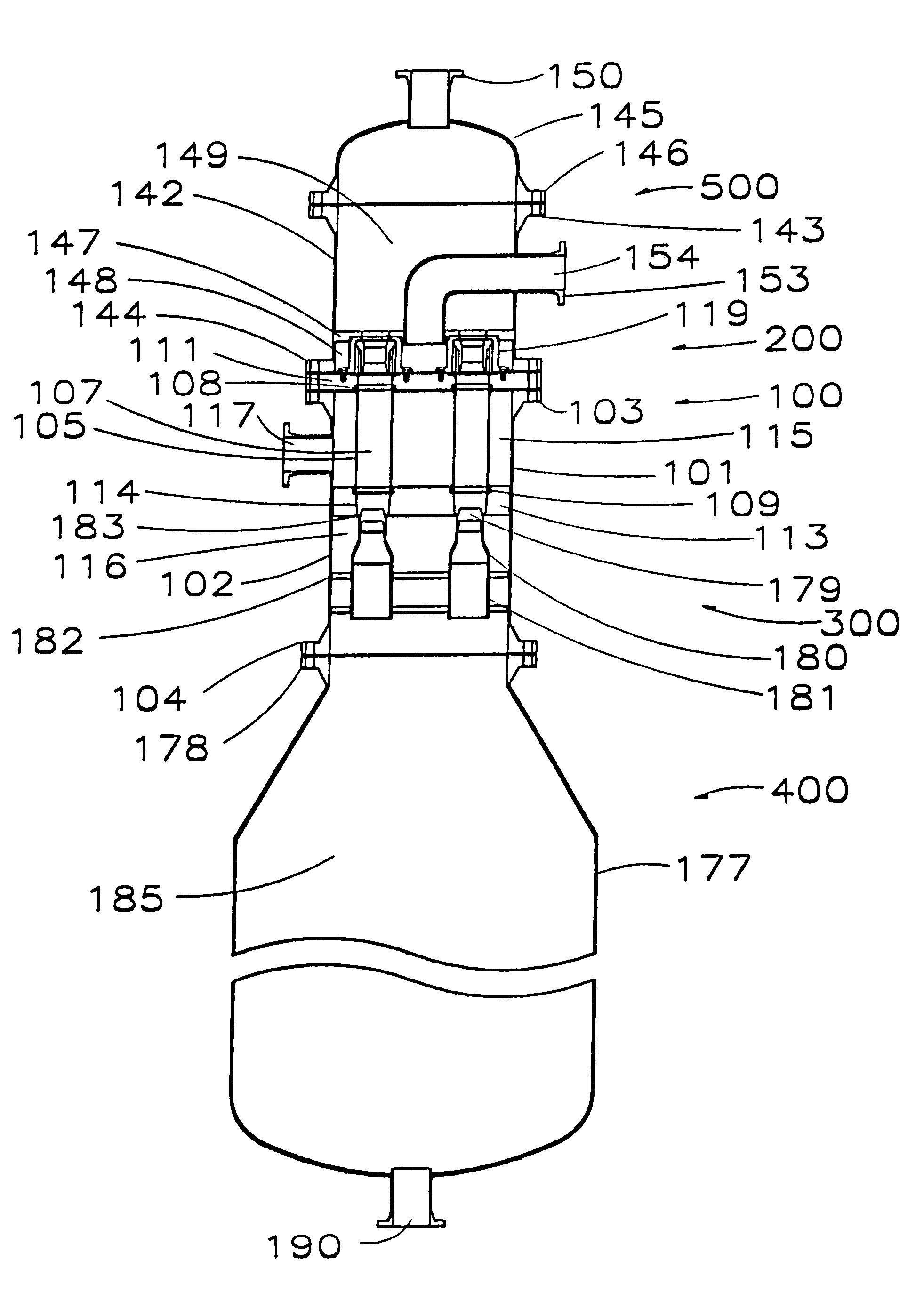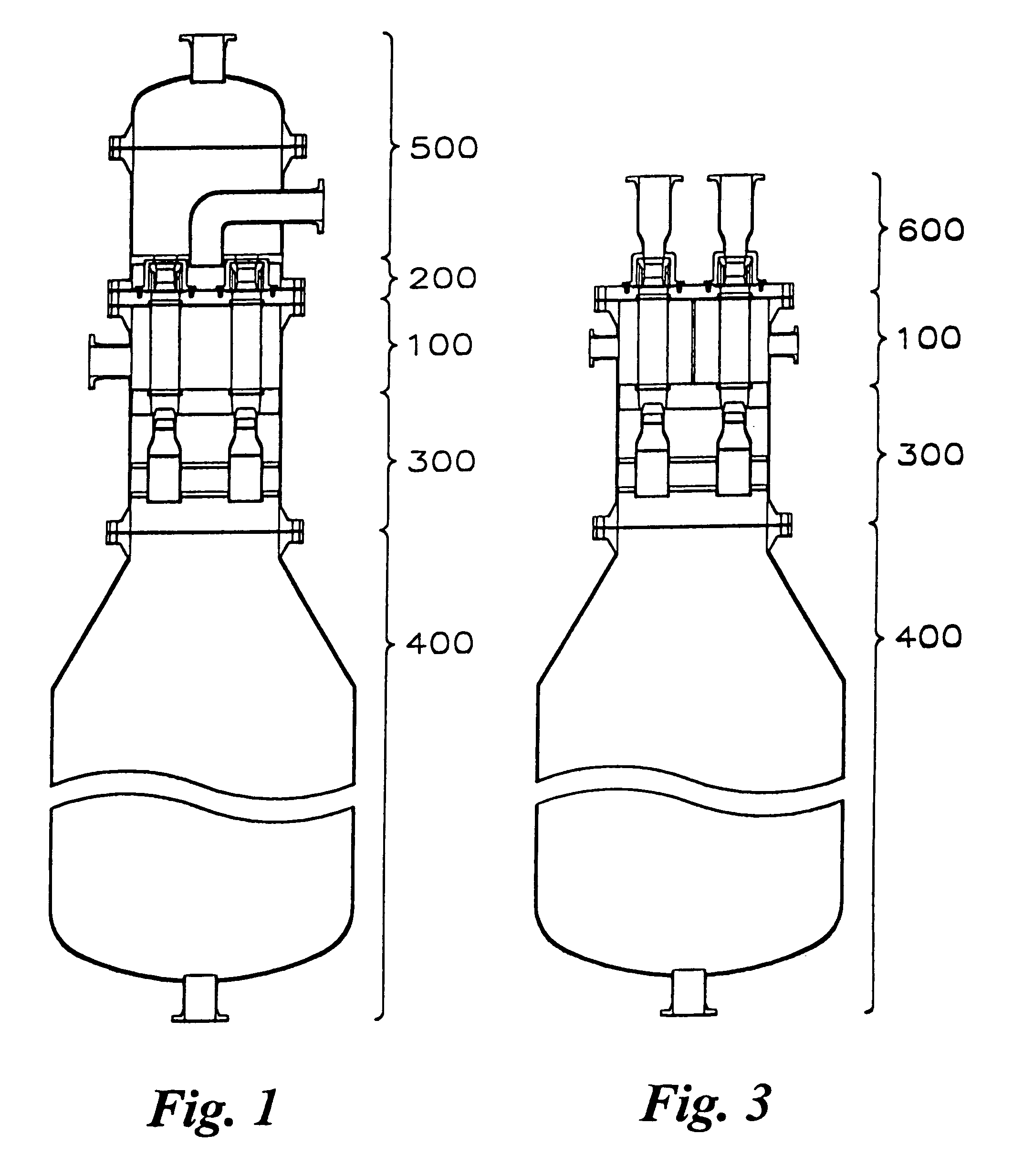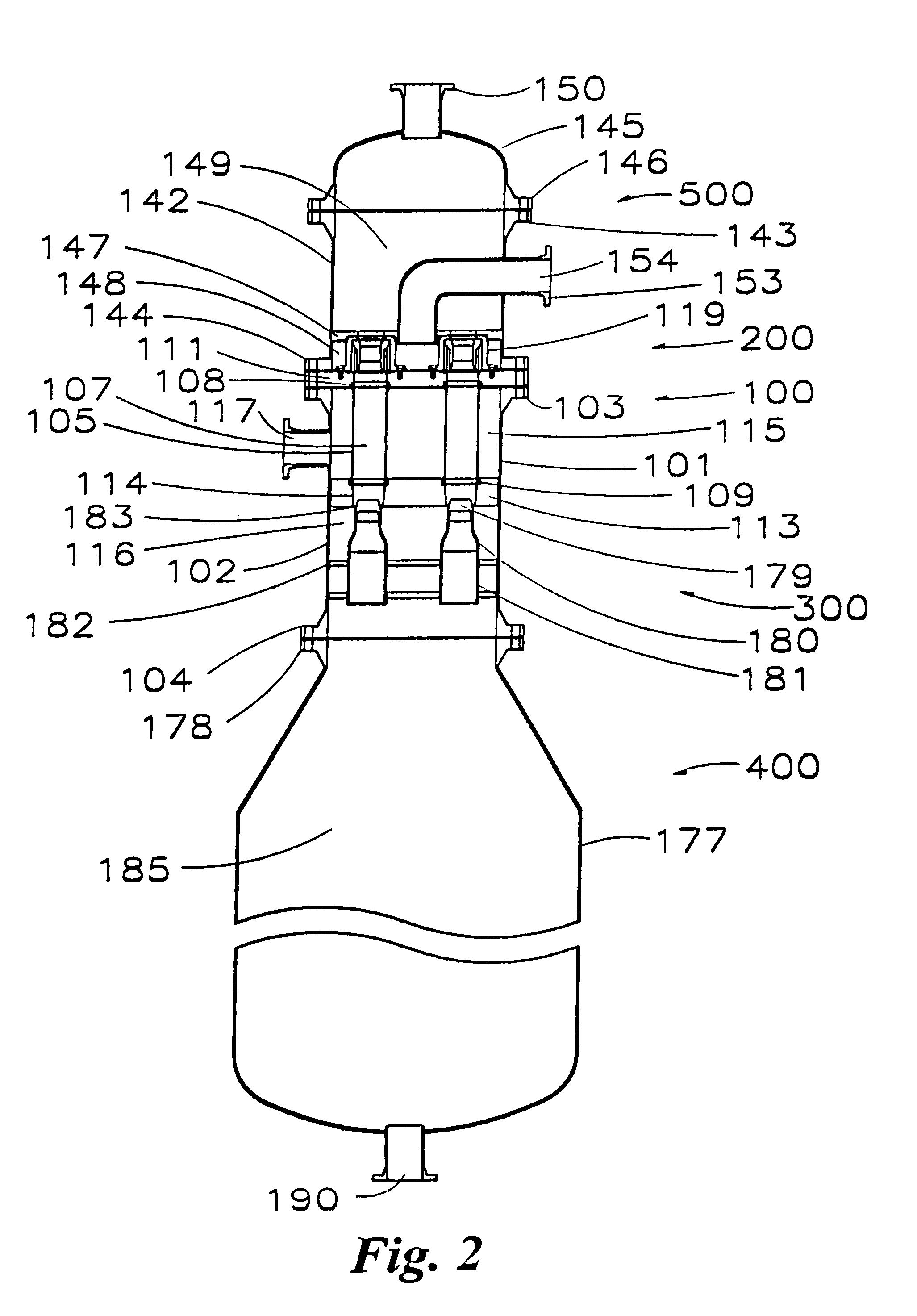Method for contacting large volumes of gas and liquid across microscopic interfaces
a microscopic interface and large volume technology, applied in the direction of liquid degasification, separation processes, carburetor air, etc., can solve the problems of large overall volume required to achieve contact conditions on a commercial scale, process limitation, and inability to arrange, etc., to achieve effective industrial scale utilization, reduce spatial separation, and optimize interphase transport efficiency
- Summary
- Abstract
- Description
- Claims
- Application Information
AI Technical Summary
Benefits of technology
Problems solved by technology
Method used
Image
Examples
first embodiment
[0064]Referring now to FIGS. 8, 10A, 10B, 11A, 11B, 12A and 12B, the liquid feed and gas exhaust section 200 of the first embodiment is shown in greater detail. A liquid inlet and gas exhaust nozzle assembly 119 is secured over each of the bores 112 in the first tube sheet 111 in axial alignment with the bores and the first or upper end 108 of each tube 105. The liquid inlet and gas exhaust nozzle assembly 119 includes a nozzle housing 120 (FIGS. 10A, 10B) having a generally cylindrical side wall 121 with a radial flange 122 at its bottom end, a larger interior diameter 123 extending upwardly therefrom, a reduced diameter exhaust opening 124 at its top end, and a rectangular liquid inlet nozzle aperture 125 through its side wall tangential to its interior diameter to establish tangential liquid flow of a thin film of incoming liquid. The rectangular nozzle aperture 125 is precisely formed by removing material on the side wall 121 of the nozzle housing to establish liquid communicati...
second embodiment
[0072]As shown in FIGS. 13A and 13B, each of the nozzle housings 164 of the second embodiment is a generally cylindrical member having a radial flange 165 at its bottom end with bolt holes in a pattern matching threaded holes in the tube sheet 162, a larger interior diameter 166 extending upwardly therefrom with a reduced diameter exhaust opening 167 at its top end in communication with the interior 169 of an elongate exhaust outlet 168 having a radial flange 170 at its outer end through which gas is exhausted. A liquid inlet 171 extends outwardly from the side of the nozzle housing 164 and, as shown here, has a Victaulic-type coupling groove 172 near its outer end, but not limited thereto. The interior of the liquid inlet 171 has a central bore which receives a pair of replaceable nozzle inserts 173 and 174 held in place by a retainer 175. The insert 173 is cylindrical. As best seen in FIG. 13C, the insert 174 has a curved end 174A matching a curved segment of the interior diameter...
PUM
| Property | Measurement | Unit |
|---|---|---|
| Time | aaaaa | aaaaa |
| Pressure | aaaaa | aaaaa |
| Flow rate | aaaaa | aaaaa |
Abstract
Description
Claims
Application Information
 Login to View More
Login to View More - R&D
- Intellectual Property
- Life Sciences
- Materials
- Tech Scout
- Unparalleled Data Quality
- Higher Quality Content
- 60% Fewer Hallucinations
Browse by: Latest US Patents, China's latest patents, Technical Efficacy Thesaurus, Application Domain, Technology Topic, Popular Technical Reports.
© 2025 PatSnap. All rights reserved.Legal|Privacy policy|Modern Slavery Act Transparency Statement|Sitemap|About US| Contact US: help@patsnap.com



